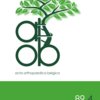Increase in gap index over time after reduction of unstable paediatric both-bone forearm fracture does not cause displacement
Conservative treatment, gap index, loss of reduction, unstable paediatric both-bone forearm fractures
Published online: Jan 08 2024
Abstract
This study investigated the effects of changes in the gap index on fracture displacement during follow-up. Patients who underwent closed reduction and casting with a diagnosis of unstable paediatric both-bone forearm fractures and a cast index < 0.8 were retrospectively evaluated. Patients were divided into Groups 1 and 2 based on their gap index (<0.15 and >0.15, respectively). Anteroposterior and lateral displacements of the radius and ulna and the gap index of the cast were measured on the X-ray after the first reduction and on the last X-ray before plaster removal. The mean patient age (n = 94, 74 boys and 20 girls; 51 in Group 1 and 43 in Group 2) was 7.09 ± 2.66 years. Fracture union times (plaster removal) were 38.8 ± 7.1 days. The mean cast index was 0.76 ± 0.05 (0.59–0.8). Both groups had similar distributions in terms of age, sex, fracture side, anatomic location and plaster removal time (p > 0.05). No significant differences were observed in either group in any radial or ulnar angulation values at any time point or the difference between the first and last values (all p > 0.05). Moreover, the gap index difference between the first and last measurements was significantly different in both groups (p = 0.002). If the cast index remains <0.8, despite the increase in the gap index in both groups, the amount of fracture displacement was small and acceptable.
